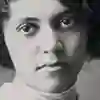Did you know that eight out of ten of the world's “most transformative” medicines emerged from discovery research? Many of these lifesaving treatments exist because scientists were given the time and tools to answer new questions with no clear path to a drug. Driven by curiosity, these discoveries provided the knowledge that eventually led to these transformative medicines. Our Curestarters share a belief that discovery research has the power to transform lives. The research we fund with your support provides the foundation for the development of new cures in the future.
Read on for our top picks of transformative moments in medicine and the discoveries that led to them.
COVID-19 vaccines
You will no doubt have been up to speed with the names of the various coronavirus vaccines that were developed during the pandemic.
But did you know that the Pfizer-BioNTech vaccine, the first in the world to be approved, originally started out as a cancer vaccine?
The brainchild of scientist couple Uğur Şahin and Özlem Türeci, the vaccine is based on experimental mRNA technology that the pair had spent their careers researching and developing for cancer treatment.
It’s thanks to decades of their research understanding the basics of cancer biology and how our immune system responds to cancer that the technology behind this coronavirus vaccine exists.


Tamoxifen - the lifesaving breast cancer drug
Tamoxifen is a drug for the most common type of breast cancer and is one of the most widely prescribed and, arguably, successful targeted cancer therapies ever developed. It began in a pharmaceutical chemistry lab in the 1950s, where it was first created by chemist Dora Richardson during research into contraceptive pills.
The chemical compound tamoxifen was designed to block the hormone oestrogen from working properly but trials as a contraceptive pill failed. A link between oestrogen and breast cancer was known at the time but the pharmaceutical company wasn’t interested in developing cancer therapies.
But thanks to pressure from lab lead Arthur Walpole, tamoxifen was eventually taken into trials for breast cancer, and the rest is history.
Warfarin - preventing blood clots
Warfarin is a drug prescribed globally to millions of people to help prevent blood clots. But did you know that it was originally marketed as a rat poison?
Warfarin is the product of a series of fortunate discoveries, that all started in 1933 when a farmer in Wisconsin wanted to understand why his cows kept dying.
Following years of discovery research in the lab, Karl Paul Link worked out that a chemical from sweet clover in the cow’s food was causing them to bleed to death. He discovered that this chemical was interfering with how blood clots
This important discovery ultimately led to the design and development of the lifesaving drug warfarin we know today.


Seeing and studying bacteria
Many diseases and illnesses that would kill millions of people a year are virtually non-existent today, in part thanks to the knowledge we have gathered over time about bacteria and how they cause infections.
The basis of this vital knowledge began years ago with two unusual stories. In 1676 Antony van Leeuwnhoek first saw bacteria under a homemade microscope, which he had originally designed to examine the quality of cloth.
Then, 200 years later, Robert Koch created a whole new way of growing bacteria in petri dishes - after he discovered weird bacterial growth growing on a slice of potato left out in the lab.
Discoveries like this can come from unexpected places and reveal knowledge with huge potential to save lives.
Drugs that stop tumour growth
Anti-angiogenics are drugs that block the development of new blood vessels and a number of them have been approved for cancer treatment, stopping tumours from hijacking the blood vessels they need to grow and spread.
Their development emerged out of an unrelated discovery by Judah Folkman who was drafted by the US Navy in the 1960s to research the development of artificial blood. He noticed that tumours in animals were not able to grow without a blood supply, sparking his curiosity to study angiogenesis – the growth of new blood vessels.
Folkman’s work led to the identification of many of the basic biological mechanisms controlling angiogenesis in cancer, and started the development of many of the drugs available today.

Incredible breakthroughs like these would never have happened without discovery research, and research cannot happen without Curestarters like you. You can help us start the breakthroughs of tomorrow by donating today.

Donate now & become a Curestarter
Be part of a united effort to stop lives being cut short by cancer.



